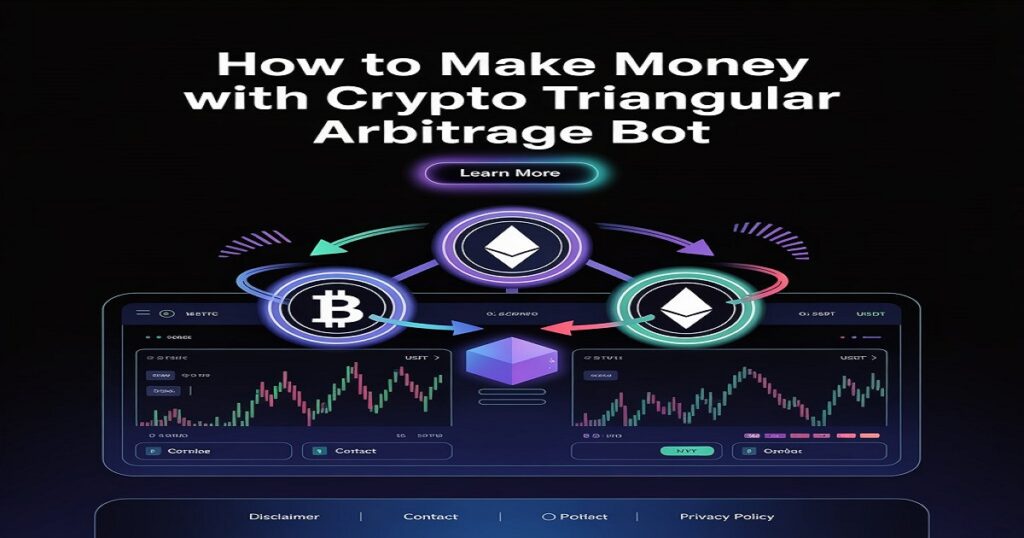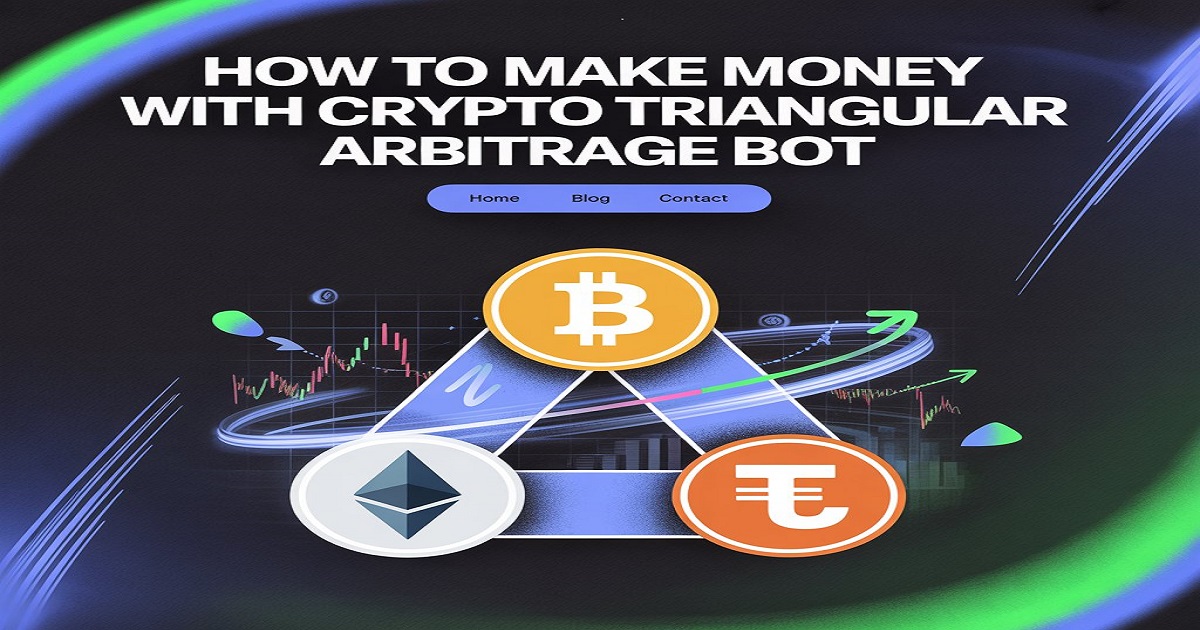I’ve been involved in crypto trading for over five years, and consistently profitable strategies include triangular arbitrage. It’s not a get-rich-quick scheme, but when executed correctly, it can generate steady returns even in volatile markets. This guide walks you through everything you need to know about How to Make Money with Crypto Triangular Arbitrage Bot, from the basics to building (or choosing) a bot to automate the process.
Table of Contents
I. Unlocking Profit in Crypto Inefficiencies
The crypto market is inefficient. Price discrepancies between exchanges create opportunity. Arbitrage exploits these differences. Triangular arbitrage leverages three cryptocurrencies and their exchange rates to profit from inconsistencies. It’s straightforward once you understand the mechanics. Consistent, small profits add up over time. But is it right for you? It depends on your risk tolerance and technical aptitude.
II. Understanding the Fundamentals
Core Concepts You Need to Know
You need to understand cryptocurrency exchanges – Binance, Coinbase, Kraken, KuCoin are popular. Each exchange has its own order book and pricing, creating opportunities. I use Binance and Kraken due to their liquidity and API access.
Next, currency pairs like BTC/USD, ETH/BTC, and ETH/USD. Fluctuations drive triangular arbitrage.
Liquidity is crucial. Insufficient volume in a currency pair increases the risk of slippage. The system relies on market inefficiencies – temporary imbalances in pricing.
III. How Crypto Triangular Arbitrage Bot Works: A Step-by-Step Example
A. Deconstructing a Triangular Arbitrage Trade
Let’s walk through a trade (as of late 2023/early 2024). Imagine these rates:
- BTC/USD on Exchange A: $40,000
- ETH/BTC on Exchange B: 0.025 BTC
- ETH/USD on Exchange C: $2,000

Here’s how it works:
- Start with USD: You begin with $10,000 USD.
- Buy BTC: You buy BTC on Exchange A at $40,000/BTC, acquiring 0.25 BTC.
- Buy ETH: You use your 0.25 BTC to buy ETH on Exchange B at 0.025 BTC/ETH, acquiring 10 ETH.
- Buy USD: You use your 10 ETH to buy USD on Exchange C at $2,000/ETH, acquiring $20,000 USD.
You started with $10,000 and ended with $20,000 – a profit of $10,000! This is simplified. Transaction fees and slippage reduce profits.
B. Calculating Potential Profit: Before Fees and Slippage
An arbitrage calculator is helpful. Several online tools calculate potential profit. Factor in transaction fees – they range from 0.1% to 0.5% per trade.
IV. Building or Choosing a Crypto Arbitrage Bot
A. Automating Your Trades: The Power of Bots
Manual triangular arbitrage is time-consuming. Trading bots automate the process, monitoring rates and executing trades when an arbitrage opportunity arises.
B. Building Your Own Bot: A Technical Overview
Building your own bot offers control. Python is popular due to its libraries. The CCXT Library provides a unified API for connecting to over 100 cryptocurrency exchanges.
You’ll need to code:
- Exchange API connections.
- Real-time price data fetching.
- Price discrepancy identification.
- Trade execution.
- Risk management (stop-loss orders).
Backtesting is crucial. Test your bot on historical data before using real money.
C. Exploring Pre-Built Bots: Options and Considerations
Pre-built bots are easier if coding isn’t your forte. Open source bots offer transparency and customization, but require technical expertise. Commercial bots are easier but have subscription fees. Choose one with a solid reputation and support.
V. Advanced Strategies and Tools
Leveling Up Your Arbitrage Game
Maximize profits with these techniques. A heavy crypto triangular arbitrage scanner identifies small arbitrage opportunities. Cross-exchange arbitrage expands your search. Latency is critical – faster execution is better. Optimize your server and network.
VI. Risks and Challenges to Consider
Navigating the Potential Pitfalls
Slippage is a constant threat. Prices change between identification and execution. Exchange rate limits restrict API calls. Security risks are paramount – protect API keys. Be aware of evolving regulatory compliance.
VII. Real-World Examples and Case Studies
Seeing Arbitrage in Action
I once identified an arbitrage opportunity involving BTC, ETH, and USDT across Binance, Kraken, and KuCoin. The profit margin was 0.2%, but the volume generated a $500 profit. A trade failed due to slippage, resulting in a small loss. This highlights the importance of risk management.

VIII. Future Trends and Conclusion
A. The Future of Crypto Arbitrage
The future involves more sophisticated algorithms, faster execution, and increased competition. Decentralized exchanges (DEXs) could create new arbitrage opportunities.
B. Final Thoughts: Is Crypto Triangular Arbitrage Right for You?
Triangular arbitrage isn’t a guaranteed path to riches. It requires dedication, skill, and learning. It can be a consistently profitable strategy for those willing to put in the effort. I’ve found it valuable, and I hope this guide helps you explore it.
For more other options to make money online click here
Frequently Asked Questions
- Do you get access to my funds? (Not directly addressed, but the emphasis on API key security and choosing reputable bots implies caution)
- Do I need to download any app to use the platform? (Depends on the bot chosen, but generally, no – access is typically web-based)
- Which exchanges are supported on the platform? (Depends on the bot chosen, but Binance, Coinbase, Kraken, and KuCoin are commonly supported)
- How often is the data on the platform updated? (Critical for scanners and bots – real-time data is essential).

